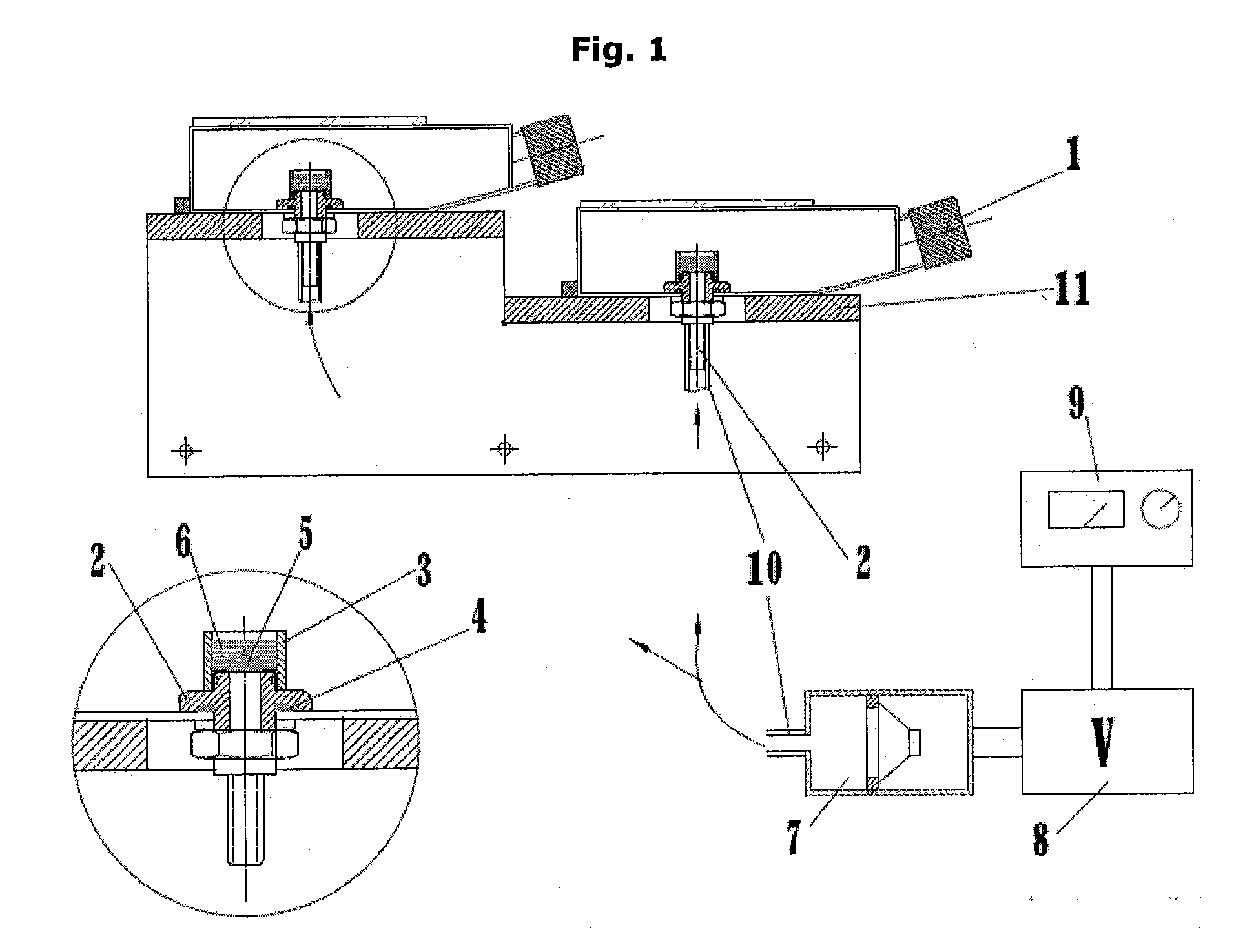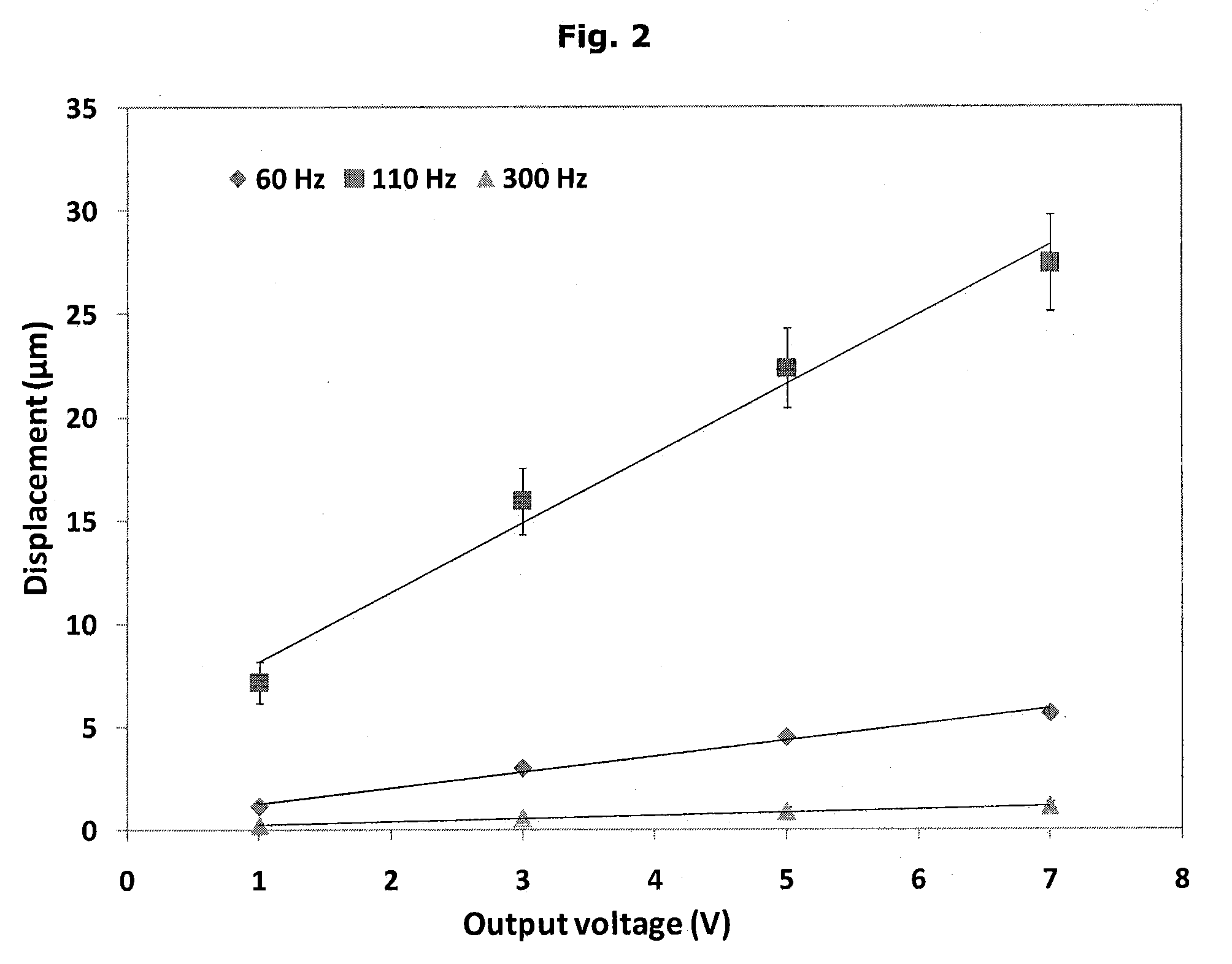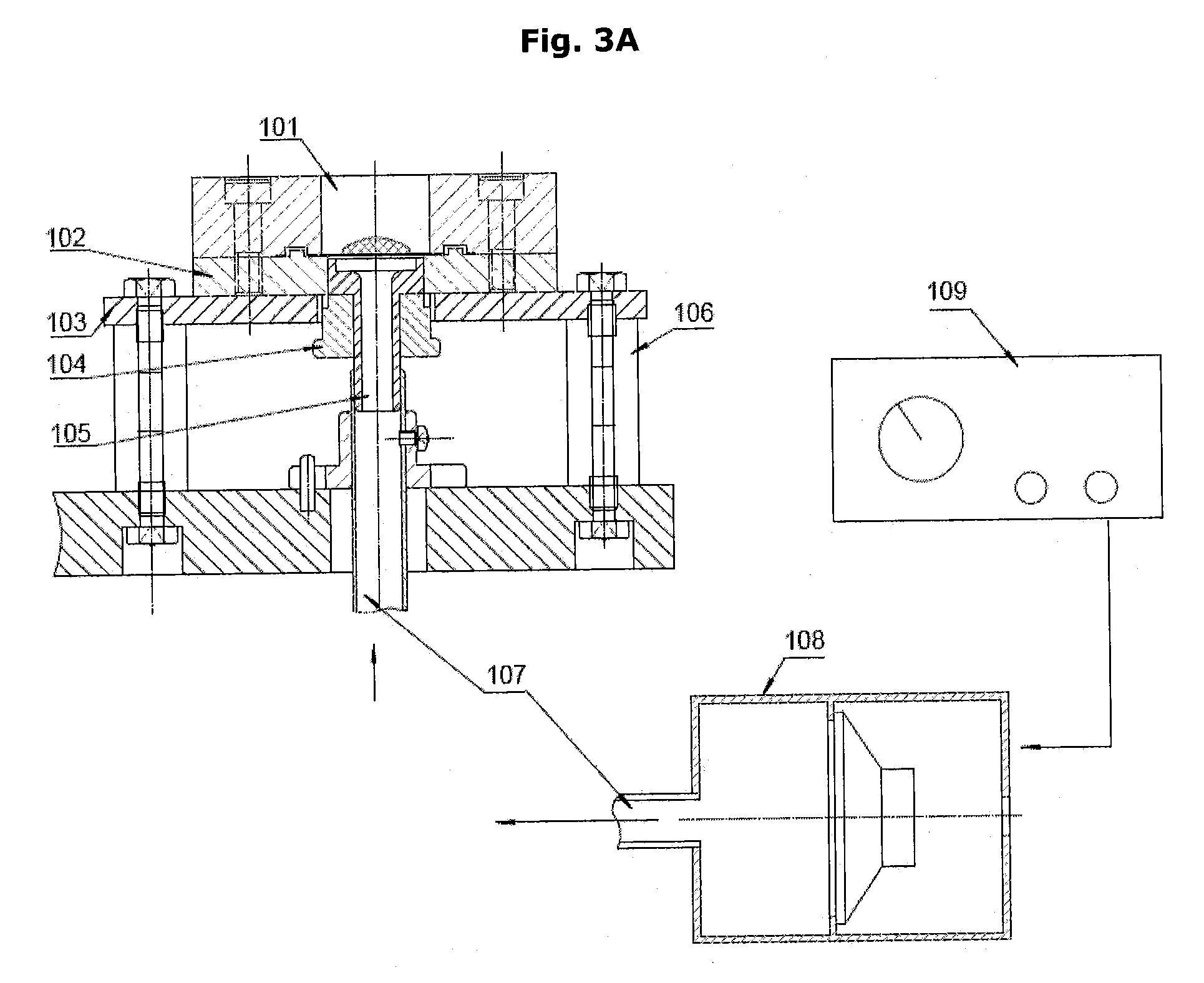Dynamic vibrational method and device for vocal fold tissue growth
a vibrational method and vocal fold technology, applied in the field of dynamic vibrational methods and devices can solve the problems of vocal fold dysfunction and damage, acid reflux, and inability to use primary vocal fold fibroblasts for vocal fold tissue engineering,
- Summary
- Abstract
- Description
- Claims
- Application Information
AI Technical Summary
Benefits of technology
Problems solved by technology
Method used
Image
Examples
example 1
Hyaluronic Acid Doubly Cross-Linked Networks
[0097]In this experiment, a new class of hyaluronic acid (HA)-based hydrogel materials was created with HA hydrogel particles (HGPs) embedded in and covalently cross-linked to a secondary network. The HA-based HGPs were synthesized and used for creating macroscopic gels, which contain two distinct hierarchical networks (doubly cross-linked networks, DXNs): one within individual particles and another among different particles. Bulk gels (BGs) formed by direct mixing of HA derivatives with mutually reactive groups were included for comparison. The materials and methods used in this experiment are described in Jha et al., 2009, Macromolecules 42(2): 537-46, the contents of which are hereby incorporated in their entirety
[0098]DXNs with measurable modulus were formed in less than 2 h upon mixing the newly synthesized particles. In the absence of oxHGP, HAADH solution (2 wt %) is simply a viscous fluid that does not have any mechanical integrity...
example 2
Hyaluronic Acid Hydrogel Particles With Enhanced Biological Functions
[0107]In this experiment, a biomimetic growth factor delivery system was developed for spatial and temporal presentation of a biologically active growth factor, bone morphogenetic protein 2 (BMP-2), to effectively stimulate chondrogenic differentiation of cultured mesenchymal stem cells (MSCs). In particular, sustained release of biologically-active BMP-2 was accomplished using PlnDI-conjugated HA-based HGPs. Chondrogenic differentiation of MSCs was demonstrated using micromass cultures of C3H10T1 / 2 cells in the presence of BMP-2-loaded, PlnDI-conjugated HA-based HGPs. Materials and methods used in the experiment are described in Jha et al., 2009, Biomaterials 30:6964-75, the contents of which are hereby incorporated by their entirety.
[0108]Compared to HGP without PlnDI, HGP-P1 exhibited significantly (p1, confirming the HS-dependent BMP-2 binding. While BMP-2 was released from HGPs with a distinct burst release fo...
example 3
Hyaluronic Acid-Based Hydrogel Matrices With Enhanced Biological Functions
[0117]In this experiment, biomimetic hydrogel matrices were developed not only to exhibit structural hierarchy and mechanical integrity, but also to present biological cues in a controlled fashion. To this end, photocrosslinkable, hyaluronic acid (HA)-based hydrogel particles (HGPs) were synthesized via an inverse emulsion crosslinking process followed by chemical modification with glycidyl methacrylate (GMA). HA modified with GMA (HA-GMA) was employed as the soluble macromer. Macroscopic hydrogels containing covalently integrated hydrogel particles (HA-c-HGP) were prepared by radical polymerization of HA-GMA in the presence of crosslinkable HGPs. The covalent linkages between the hydrogel particles and the secondary HA matrix resulted in the formation of a diffuse, fibrilar interface around the particles. Compared to the traditional bulk gels synthesized by photocrosslinking of HA-GMA, these hydrogels exhibit...
PUM
 Login to View More
Login to View More Abstract
Description
Claims
Application Information
 Login to View More
Login to View More - R&D
- Intellectual Property
- Life Sciences
- Materials
- Tech Scout
- Unparalleled Data Quality
- Higher Quality Content
- 60% Fewer Hallucinations
Browse by: Latest US Patents, China's latest patents, Technical Efficacy Thesaurus, Application Domain, Technology Topic, Popular Technical Reports.
© 2025 PatSnap. All rights reserved.Legal|Privacy policy|Modern Slavery Act Transparency Statement|Sitemap|About US| Contact US: help@patsnap.com



